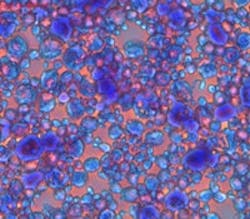Combination Buoys Biofuels
Teaming up a unique "enzyme cocktail" with advanced yeast technology promises to significantly improve the productivity of making so-called second-generation biofuels, i.e., those produced from agricultural residues and nonfood crops, claims DSM, Herleen, The Netherlands.
The Dutch company has found that a fungus that normally lives on fallen trees possesses a wealth of enzymes for converting cellulosic matter to sugars, which then can be made into ethanol or other biofuels via fermentation. These enzymes are well geared to breaking down the most recalcitrant plant matter, says the firm.
Figure 1. Advanced strain can double ethanol yield because it converts all C5 and C6 sugars.
Source: DSM.
Moreover, the fungus is thermophilic, working at temperatures up to 65°C, much higher than enzymes conventionally used. This is an important advantage, DSM notes, because most processes for freeing fermentable sugars from biomass include high-temperature pre-treatment before enzymatic hydrolysis occurs. Using the fungus thus reduces required cooling and cooling time — and fewer enzymes are needed to do the same job at the higher temperature. In addition, running at 65°C makes the fermentation process less susceptible to contamination from extraneous organisms.
Meanwhile, through strain improvement and genetic modification, DSM has created what it calls an "all you can eat" yeast (Figure 1) that consumes all C5 and C6 sugars equally well, yielding ethanol from glucose, xylose, aribinose, galactose and mannose. This results in a fundamental increase in sugar conversion into biofuel. While the benefit over standard yeasts depends upon the specific ratio of C5 and C6 sugars, the company estimates that ethanol yield from a mixed-sugar fermentation would increase by a factor of two.
DSM is hoping not only to change the enzymes and yeast used in second-generation biofuel production but also the way in which the enzymes are supplied. Instead of today's centralized facilities for producing enzymes, the company foresees making the enzyme cocktail right at the biofuel site, to cut costs, increase efficiency and bolster process compatibility.

